For most of recorded history, The Hittite Empire was thought to be more of a myth than an actual fact. This state of affairs lasted until the city of Hattusa, the capital of the Hittite Empire, was rediscovered around the turn of the 20th Century.
Now the city, which is located near Boğazkale close to Kızılırmak River, has become a popular tourist attraction. Hattusa was the center of the powerful Hittite empire, which stretched across Anatolia (modern Turkey) to Northern Syria.
The Hittite King Muwatalli II (1295-1272 BCE) had made himself a thorn in the side of Pharaoh Ramesses II by making regular incursions into Egyptian territory and fortifying the city of Kadesh, just north of the border between the two states.
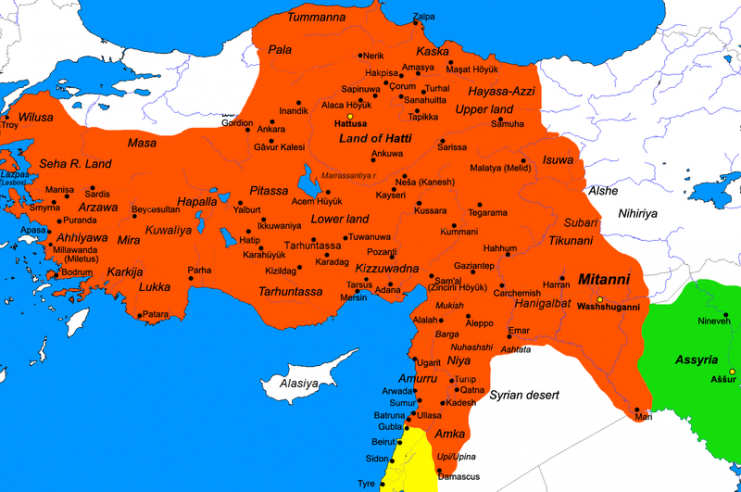
The Hittites of Anatolia had been developing their power-base since the 2nd millennium BCE. Around 1530 BCE, they replaced Babylonia as the regional power and started looking towards their powerful neighbor, Egypt, by poking around their borders. For most of its history, Egypt thought of the Hittites as being of little importance or threat.
This lasted until the Egyptian leader Akhenaten issued his general to engage them in what was ultimately an unsuccessful campaign. By the time of Tutankhamun, the threat posed by the Hittites had grown sufficiently to include fortified positions on the edges of Egypt’s borders.
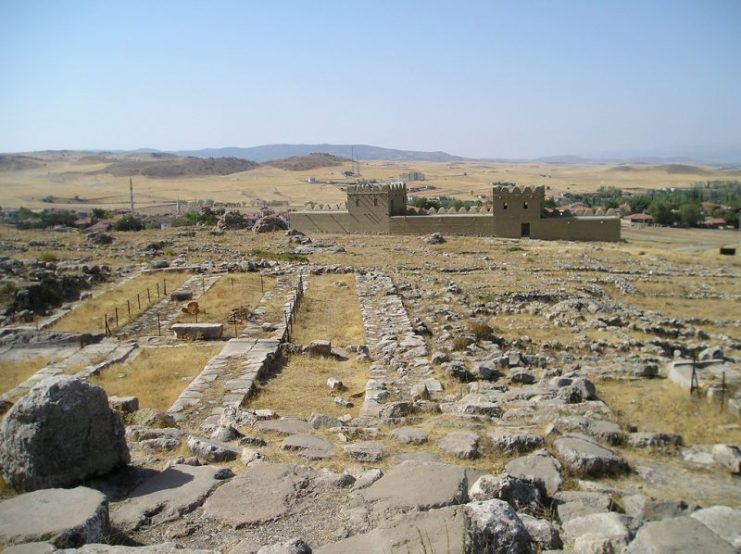
In 1320 BCE, Horemheb became Pharaoh and initiated an aggressive policy where the Hittites were concerned. He secured Egypt’s borders but still couldn’t contain the threat caused by the Hittite incursions. Seti I (1290-1279 BCE) was responsible for securing both Palestine and Kadesh for Egypt but made no provisions for keeping the city.
This did Ramesses II, Seti’s successor, few favors. Because of Seti’s negligence, he had to deal with the larger problem of a Hittite invasion. In 1274 BCE he gathered his forces at Per-Ramesses to push the Hittites from Kadesh and to shatter their military strength.
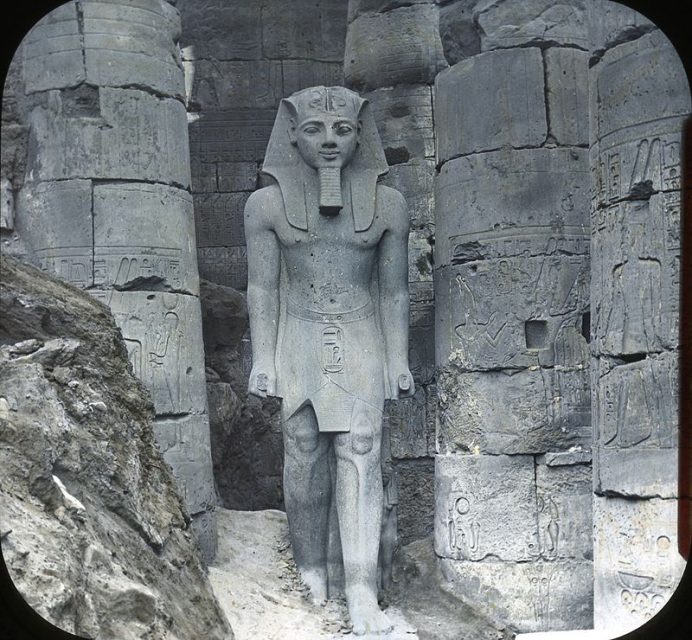
Among the remnants of the Hittite civilization discovered at Hattusa were tens of thousands of clay tablets documenting much of the life of the empire. The clay tablets didn’t provide all the details, but they did provide some information.
War provides an impetus for technological development perhaps better than anything else, and the war between the Egyptians and the Hittites was absolutely no different.
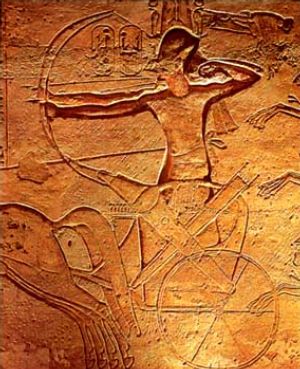
In order to deal with the threat posed by the Egyptians, the Hittites developed the lightest and fastest chariots in the world. Technically, they are categorized as being a Bronze Age civilization, but they were already using steel in both their weapons and tools.
When Ramesses II brought his forces north to engage the Hittites his forces were surprised by the attack of Hittite chariots scattering the advance elements. The Hittites then rounded toward the Egyptian camp.
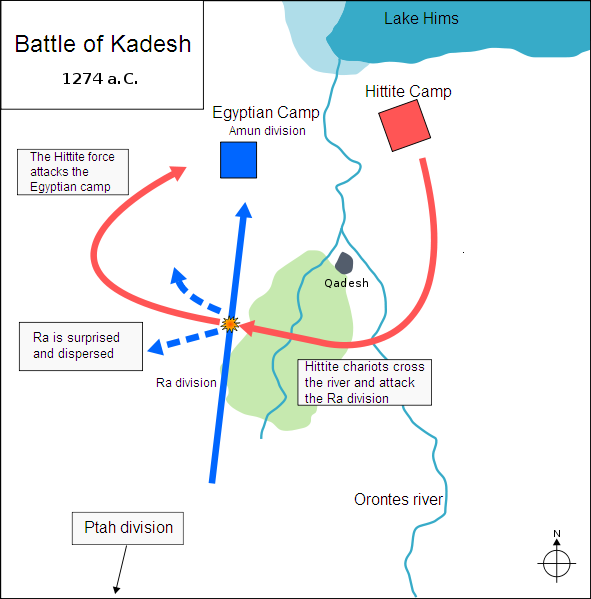
The Amun division of Eygpt made up the better part of the camp and they engaged the Hittites throwing them back and forcing them to retreat back across the river.
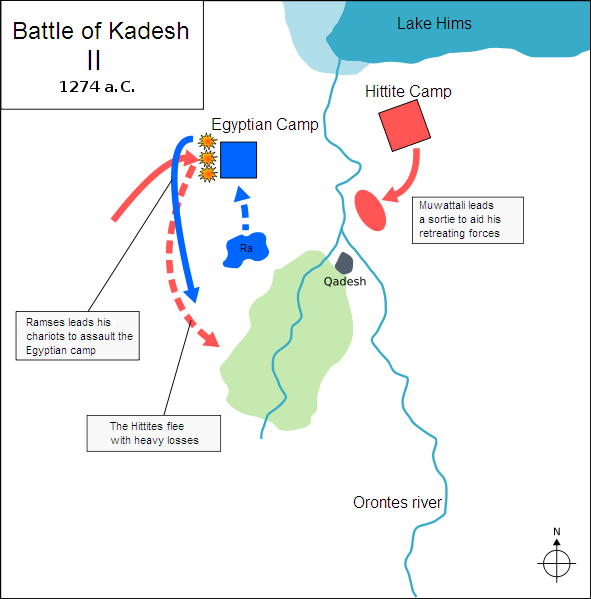
With the heavy losses of his first attack, Muwattali orders his reserve chariot forces to attack in order to cover his retreating units. However, he did not realize that the Ptah Division was approaching from the south. His new attack on the Egyptians was also repelled and fearing an attack on his rear, he ordered a retreat across the river. Many of his charioteers were forced to abandon their chariots an swim the river.
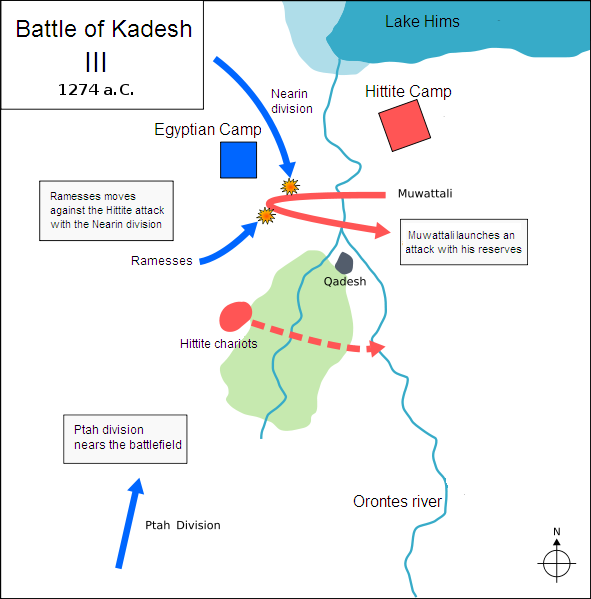
Ultimately, the Battle of Kadesh was a draw, although both combatants claimed victory – there appears to have been several small but indecisive victories for each group. For the Egyptians, Ramesses II failed to capture the city, but he did manage to break the Hittite army.
Muwatalli II, in contrast, kept the city but did not crush the Egyptians. Superior technology led the day for the Egyptians, keeping them from suffering a resounding loss as the more agile two-man Egyptian chariot ran circles around its Hittite counterpart, which carried three men and weighed considerably more.
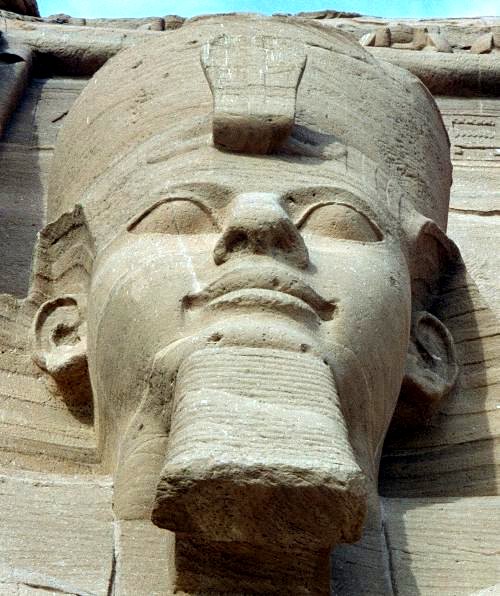
When Muwatalli II died, Hattusili III ascended the throne of the Empire. He signed the world’s first peace treaty in 1258 BCE, ending the war with Egypt.
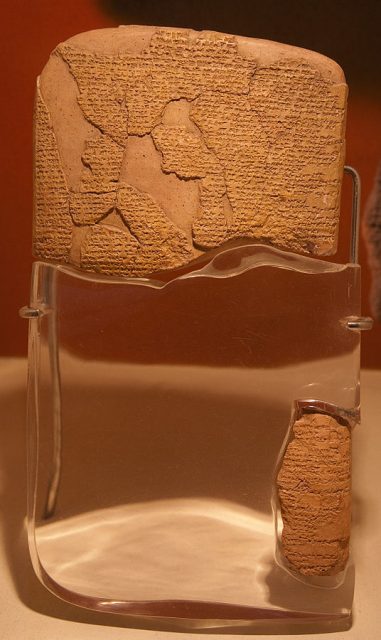
When compared to the bureaucratic nature of today’s peace treaty’s, the one signed by Hattusili III and the Egyptian pharaoh was primitive. It simply stated that Egypt will not attack the Empire of the Hittites, and the Hittites will not attack Egypt.
This treaty was the beginning of a relationship of peace, trade, and knowledge, rather than one of war. The Hittites passed into history around 1200 BCE due to attacks by the Sea Peoples, the Assyrians, and a tribe called the Kaska.
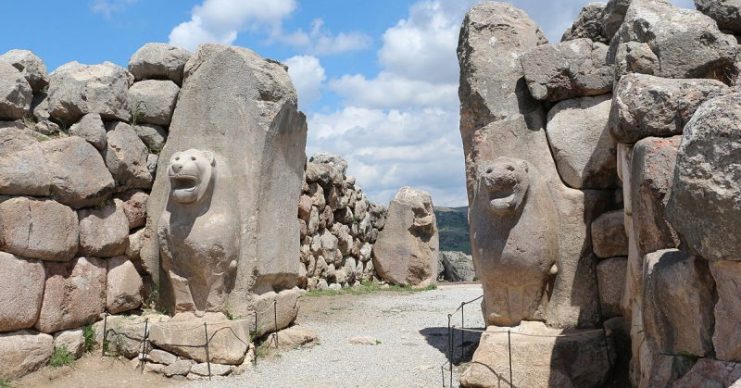
It is believed that both Hattusa and the Hittite Empire were destroyed at some point in the 12th century BCE. The royal residence, also called the Acropolis, was located in the city’s center on a high ridge.
The population of the city at the peak of the empire was between 40,000 and 50,000 people. Archeological excavations suggest that the city was destroyed primarily by fire after the citizens had been evacuated.
